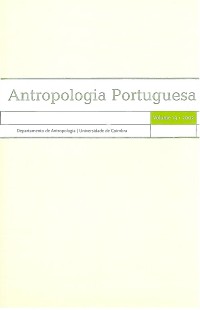Please use this identifier to cite or link to this item:
https://hdl.handle.net/10316.2/41257| DC Field | Value | Language |
|---|---|---|
| dc.contributor.author | Brothwell, Don | - |
| dc.contributor.author | Browne, Sue | - |
| dc.date.accessioned | 2017-03-27T22:51:35Z | |
| dc.date.accessioned | 2020-09-14T11:13:22Z | - |
| dc.date.available | 2017-03-27T22:51:35Z | |
| dc.date.available | 2020-09-14T11:13:22Z | - |
| dc.date.issued | 2002 | - |
| dc.identifier.issn | 0870-0990 | - |
| dc.identifier.issn | 2182-7982 (digital) | - |
| dc.identifier.uri | https://hdl.handle.net/10316.2/41257 | - |
| dc.description.abstract | There are now quite a number of cases of skeletal atrophy, ranging from widespread to very limited extent in the body. The cases are from different populations and time periods. Usually, the pathology is considered to be the result of early trauma or a long term sequel to the poliomyelitis virus. In fact there are various alternative diagnoses to this infection, and these will be discussed in relation to some of the archaeological cases, and especially a recent find from southern England. In particular it seems important when considering such pathology to take account of all possible explanations, traumatic, infectious and genetic. | eng |
| dc.description.abstract | A atrofia esquelética, actualmente com vários casos descritos de diferentes populações e cronologias, pode ser limitada na sua extensão ou generalizada a todo o corpo. Geralmente, a patologia é considerada como o resultado de trauma antigo ou como sequela, a longo termo, ao vírus da poliomielite. De facto, existem vários diagnósticos alternativos para esta infeção que serão discutidos em alguns casos arqueológicos e, em especial, no recentemente descoberto no Sul de Inglaterra. Em particular, parece importante ponderar todas as explicações possíveis para esta patologia, como a traumática, a infecciosa e a genética. | por |
| dc.language.iso | eng | - |
| dc.publisher | CIAS - Centro de Investigação em Antropologia e Saúde | - |
| dc.rights | open access | - |
| dc.subject | Skeletons | eng |
| dc.subject | paralysis | eng |
| dc.subject | atrophy | eng |
| dc.subject | poliomyelitis | eng |
| dc.subject | differential diagnosis | eng |
| dc.subject | muscular dystrophy | eng |
| dc.subject | Esqueletos | por |
| dc.subject | paralisia | por |
| dc.subject | atrofia | por |
| dc.subject | poliomielite | por |
| dc.subject | diagnóstico diferencial | por |
| dc.subject | distrofia muscular | por |
| dc.title | Skeletal atrophy and the problem of the differential diagnosis of conditions causing paralysis | por |
| dc.type | article | - |
| uc.publication.collection | Antropologia Portuguesa vol. 19 | - |
| uc.publication.firstPage | 5 | - |
| uc.publication.lastPage | 17 | - |
| uc.publication.location | Coimbra | - |
| uc.publication.journalTitle | Antropologia Portuguesa | - |
| uc.publication.volume | 19 | por |
| dc.identifier.doi | 10.14195/2182-7982_19_1 | - |
| uc.publication.digCollection | IP | - |
| uc.publication.digCollection | B1 | - |
| uc.publication.orderno | 2 | - |
| uc.publication.area | Ciências Sociais | - |
| uc.publication.manifest | https://dl.uc.pt/json/iiif/10316.2/41257/214716/manifest?manifest=/json/iiif/10316.2/41257/214716/manifest | - |
| uc.publication.thumbnail | https://dl.uc.pt/retrieve/11221359 | - |
| uc.itemId | 70990 | - |
| uc.thumbnail.uri | https://dl.uc.pt/iiif-imgsrv/11221331/dl!3!11!33!43!113343353408711892157067504638614927961 | - |
| item.grantfulltext | open | - |
| item.fulltext | With Fulltext | - |
| Appears in Collections: | Antropologia Portuguesa | |
Files in This Item:
| File | Description | Size | Format | |
|---|---|---|---|---|
| skeletal_atrophy_and_the_problem.pdf | 2.39 MB | Adobe PDF |  |
Items in DSpace are protected by copyright, with all rights reserved, unless otherwise indicated.
